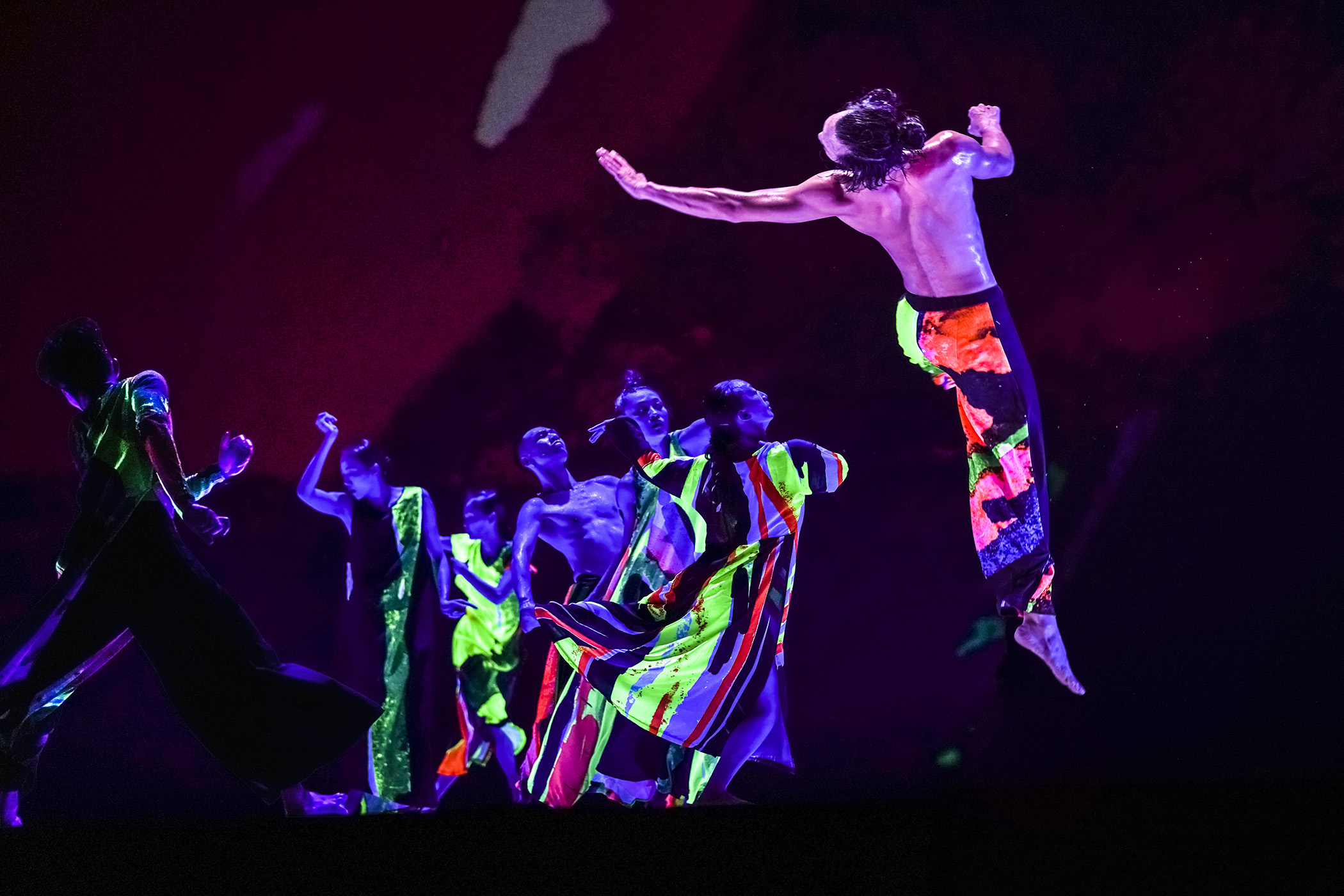Cloud Gate Dance Theater of Taiwan dazzled audiences with their fusion dance show, “13 Tongues,” on Thursday. The group, a prominent Asian contemporary dance company, combines ancient and modern movement techniques through training in meditation, Qi Gong (a traditional Chinese breathing technique), martial arts, modern dance and ballet.
“13 Tongues” was filled with memorable moments, such as when a goddess in fluorescent neon was lifted into the air or when her colorful costume was brought to life by the manipulations of the other dancers as they twisted the fabric into various shapes. The company members frequently sang as they danced, making the show a feast for both the eyes and ears. They produced sharp, keening noises and festive folk tunes and even a performer who screamed while staring piercingly at the audience.
Although these enigmatic moments were occasionally overwhelming, especially given the combination of so many sensory experiences, they did effectively communicate the magic of storytelling — that is, the blurring of lines between the fantastical and the familiar; the fusion between imagined and real worlds.
“13 Tongues” is an ode to choreographer Cheng Tsung-Lung’s childhood memories of the busy street life of Bangka, the oldest district in Taipei, and the legendary storyteller Thirteen Tongues who lived there.
According to legend, Thirteen Tongues could create narratives for all types of people in Bangka, the “high and low born, sacred and profane, men and women.” As such, Cheng’s choreography sought to demonstrate how all of these characters could interact and coexist in the same world, on the same stage.
The show began and ended with the clanging of a single hand bell, a symbol of the workday’s beginning and end for street traders. The accompanying music ranged from Taiwanese folk songs to Taoist chants and electronica. Each dancer was clothed in a black, formless frock that gave the impression of water rippling under the night sky as they moved across the floor.
Indeed, the most impressive element of “13 Tongues” was undoubtedly the dancers themselves. Their movement quality was remarkably fluid and graceful, especially in partnering scenes where the rapid transitions from the floor to airborne lifts happened in the blink of an eye. In ensemble sections, their precisely synced movements and sharp formations were mesmerizing to watch.
Despite the strength of the ensemble scenes, they were rare throughout the course of the show. Instead, Cheng’s choreography mostly spotlighted individual artists as the others clapped, sang or watched from the shadows. This artistic choice strongly reminded me of the informal dance circles that spontaneously form in all sorts of group settings, such as those in hip hop communities, social dance scenes and even during the intermissions of Stanford’s own student dance showcases. While these sections vividly portrayed the communal culture of Bangka’s bustling markets and street life, I would have preferred to see more of the masterful group choreography that highlighted the synergy of the dancers’ movements.
In the final scene, all of the show’s elements came together in a spectacular display of color and music. The dancers moved towards the audience in a horizontal line as the music swelled in joyous celebration, while the image projected on the background screen expanded to bring color to edges of the stage curtains. As evidenced by multiple rounds of thunderous applause, Cheng’s vibrant and thrilling transformation of his childhood memories into dance left audiences dazzled and inspired by the power of juxtaposing tradition and innovation.
Editor’s Note: This article is a review and includes subjective thoughts, opinions and critiques.
